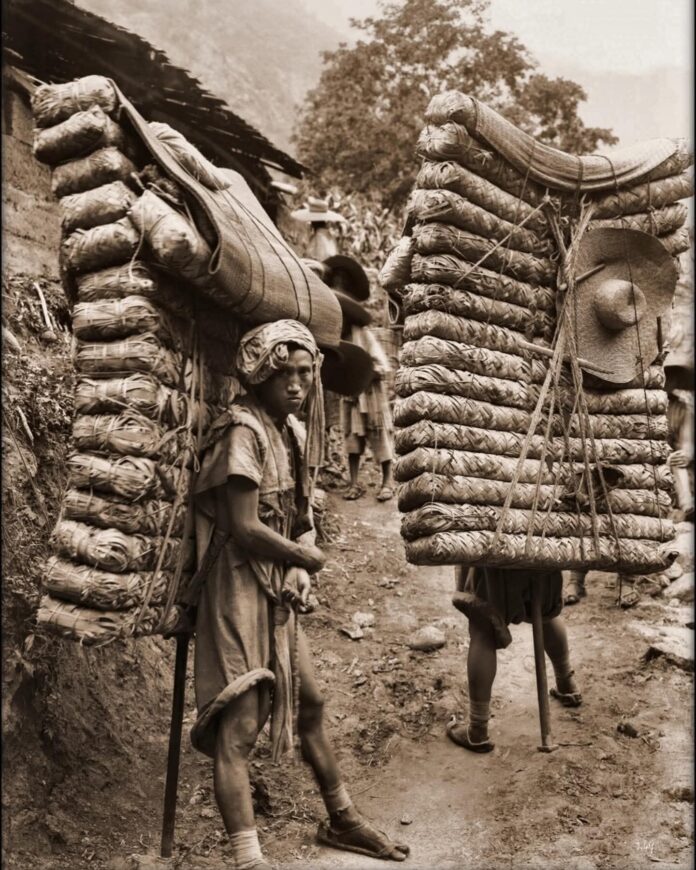In 1908, deep in the rugged mountains of Sichuan Province, China, a group of extraordinary laborers known as tea porters braved one of the most treacherous trade routes in the world: the Tea Horse Road.
Their mission was both vital and punishing—to transport brick tea hundreds of miles to Tibet, where tea was not only a daily staple but also a cultural necessity.
These porters, often referred to as human beasts of burden, carried massive loads that could weigh up to 100 kilograms (over 220 pounds). With wooden racks strapped to their backs and bodies bent under the strain, they marched tirelessly through remote, mountainous terrain, ascending and descending narrow trails carved into cliffsides.
The path stretched across altitudes exceeding 5,000 feet, with muddy, crumbling roads that turned dangerous with each passing rainstorm.
On average, a porter would travel 10 kilometers a day, a slow but steady pace dictated by the weight of their cargo and the treacherous conditions. Their sandals, made of straw or leather, offered little protection from the sharp rocks and bitter cold.
Despite the hardships, the tea trade was essential. The brick teas they carried were compressed blocks of dark tea, easier to transport and ideal for Tibetan butter tea. In return, horses, medicinal herbs, and other Tibetan goods made their way back along the same grueling route.
These men were more than just laborers—they were lifelines, connecting two ancient cultures across some of the harshest geography on Earth. The Tea Horse Road was not just a trade route; it was a testament to human endurance, cultural exchange, and the determination to survive and thrive against all odds.
Today, their legacy lives on in stories, photos, and the still-winding paths through the Sichuan highlands.



